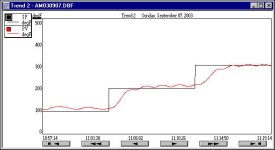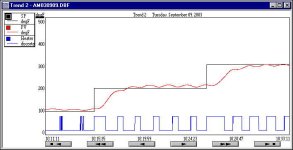Let me be the first to ask..
Hi Peter,
I have been following this post for a while. I have to admit, I'm very interested in trying out the SMC. I have downloaded the slc file, but am having trouble opening it. I think it is because you must have developed it on a newer version of RSlogix500 than I am running. I dont know our version number right now, I'm not at work.I have just ordered the newest version last week, and when I get a chance, I will try it out. As per you comment about no one asking "how" you come up with the sensors time constant, let me be the first ask, and to see I my understanding is correct. Please correct me if im wrong, but to come up with the time constant, dont you have to figure out the sensors transfer function? Basically wouldnt you do a "step" response on just the sensor? (i.e - for a thermocouple, apply heat and measure the mV output??) This would give you the sensors, gain, dead time, and time constants. This could be done on a chart recorder..Am I correct?
Thanks,
Andrew Evenson.


